#historial facial reconstruction
Explore tagged Tumblr posts
Text
So, I saw this image on Facebook, and it was supposedly showing what Queen Nefertiti would have looked like in real life:

Now, I thought this AI generated garbage was just truly terrible on a number of levels; first off, she looks wayyyyyy too modern - her makeup is very “Hollywood glamour”, she looks airbrushed and de-aged, and as far as I’m aware, Ancient Egyptians didn’t have mascara, glitter-based eyeshadows and lip gloss. Secondly, her features are exceptionally whitewashed in every sense - this is pretty standard for AI as racial bias is prevalent in feeding AI algorithms, but I genuinely thought a depiction of such a known individual would not exhibit such euro-centric features. Thirdly, the outfit was massively desaturated and didn’t take pigment loss into consideration, and while I *do* like the look of the neck attire, it's not at all accurate (plus, again, AI confusion on the detailing is evident).
So, this inspired me to alter the image on the left to be more accurate based off the sculpture’s features. I looked into Ancient Egyptian makeup and looked at references for kohl eyeliner and clay-based facial pigment (rouge was used on cheeks, charcoal-based powder/paste was used to darken and elongate eyebrows), and I looked at pre-existing images of Nefertiti (namely other reconstructions). While doing this, I found photos of a 3D scanned sculpture made by scientists at the University of Bristol and chose to collage the neck jewellery over the painting (and edited the lighting and shadows as best as I could).

Something I see a lot of in facial recreations of mummies is maintaining the elongated and skinny facial features as seen on preserved bodies - however, fat, muscle and cartilage shrink/disappear post mortem, regardless of preservation quality; Queen Nefertiti had art created of her in life, and these pieces are invaluable to developing an accurate portrayal of her, whether stylistic or realistic in nature.

And hey, while I don't think my adjustments are perfect (especially the neck area), I *do* believe it is a huge improvement to the original image I chose to work on top of.
I really liked working on this project for the last few days, and I think I may continue to work on it further to perfect it. But, until then, I hope you enjoy!
Remember, likes don't help artists but reblogs do!
#Nefertiti#Queen Nefertiti#Ancient Egypt#Facial Reconstruction#art#artist#digital artist#historical#history#historical figure#ancient egyptians#artistic interpretation#historial facial reconstruction#Neferneferuaten#Queen Neferneferuaten Nefertiti#illustration#digital art#digital illustration
20K notes
·
View notes
Text


'The Winterton Lady' Romano-British Burial and Facial Reconstruction, North Lincolnshire Museum, Scunthorpe
#prehistory#prehistoric#Romano-British#burial#facial reconstruction#archaeology#ancient history#ancient living#ancient cultures#sarcophagus#Lincolnshire#relic#skeleton
59 notes
·
View notes
Text

Facial reconstruction of the Ptolemaic Egyptian Queen Cleopatra VII (r. 51-30 BCE). This artistic representation of Cleopatra is primarily based on a bust from the Berlin Altes Museum, widely agreed to depict Cleopatra. In addition to the Berlin portrait, the features in this reconstruction are based upon contemporary coin portraits and a bust from the British Museum which may depict Cleopatra.
#cleopatra#cleopatra vii#history#ancient egypt#egypt#ptolemaic egypt#ptolemies#ptolemaic dynasty#ancient history#facial reconstruction
147 notes
·
View notes
Text
So apparently Swedish and Polish facial reconstructionists decided to try to recreate the famous Incan "Ice Maiden" mummy dubbed "Juanita".
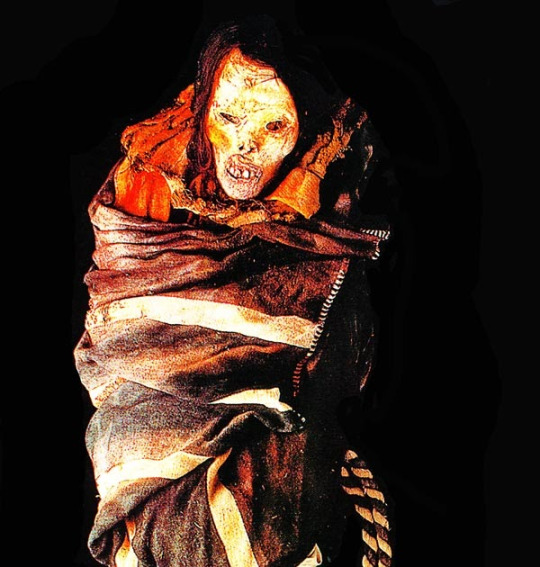

Truthfully, I feel like these European reconstructionists ( do not know how to re-create Andean facial features and the results ended up... terribly uncanny. So down below, with the use of photoshop, I edited the bust with more Andean Indigenous Peruvian facial features to honor the "Ice Maiden".
My version:
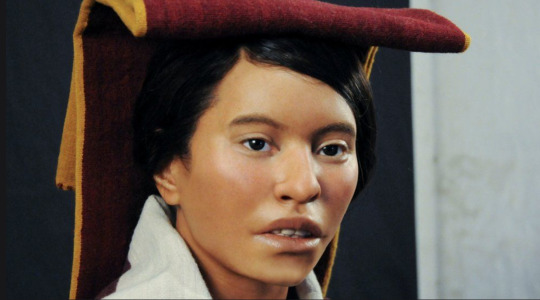
I made her brows straighter and longer, got rid of the cleft chin, gave her a down-turned mouth, broader lips (not small), I made her lips a little larger too and I made her nose longer/bigger and wider around the nasal Ala. I also broadened her nostrils a tad
and I made her under-eyes more puffy
I widened her bone structure
I emphasized her sideburns
My version (on top):
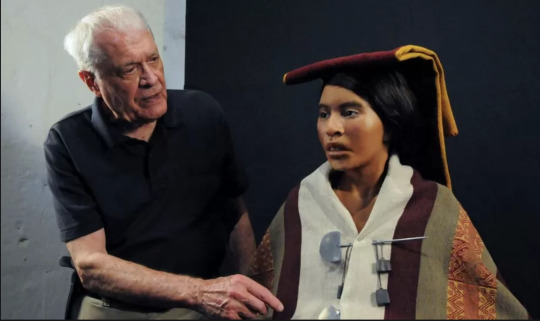
original (white euros created) below:
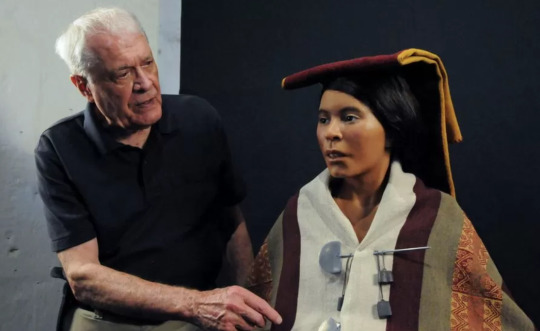
I hope that in the future, more Andean/Indigenous Peruvian facial reconstructionists have opportunities to work on revealing the faces of their kin and ancestors. We needed more andean people involved in her reconstruction.
Let me know what you think of my edits down below too!
I hope you enjoy them!
the original article can be read here:
#I took the artistic liberty to remove her cleft chin all together because i never see andeans like myself with clefts#i love a more down turned lip/mouth shape#archaeology#indigenous peruvians#native peruvian#inca#inca girl#ice maiden#facial reconstruction#my photoshops#andean history#andean pride#native south american#mujer andina#ndn tumblr#andean culture#andean textiles#andean indigenous#indigenous women#andina#andean#bipoc#indigena#pre columbian#andes#warmi#we need more ndns in science
45 notes
·
View notes
Text

Forensic facial reconstructions of Nicholas II (Skeleton 4), Alexandra Feodorovna (Skeleton 7), Olga Nikolaevna (Skeleton 3), Tatiana Nikolaevna (based on the conclusion that she was Skeleton 5), Anastasia Nikolaevna (based on the conclusion that she was Skeleton 6), Eugene Botkin (Skeleton 2), Anna Demidova (Skeleton 1), and Aloise Trupp (Skeleton 9).
#history#imperial russia#romanovs#olga nikolaevna#tatiana nikolaevna#anastasia nikolaevna#anastasia romanov#otma#romanov sisters#nicholas ii#tsar nicholas ii#alexandra feodorovna#forensics#facial reconstruction#eugene botkin#anna demidova#aloise trupp#romanov#romanov family#russian royalty
10 notes
·
View notes
Text
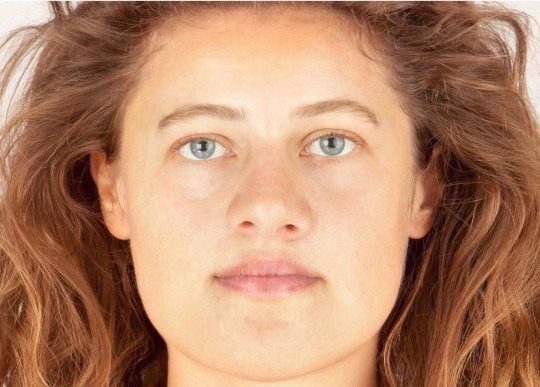
Facial reconstruction of Eva, also referred to as Ava, she was a Bronze Age woman whose remains were discovered in a rock-cut tomb at Achavanich, in the Scottish Highlands. Her burial site and subsequent studies have provided invaluable insights into life in Britain over 4,000 years ago. She is believed to have lived around 4,250 years ago during the early part of the Bronze Age, a period marked by significant advancements in technology, particularly metalworking.
Discovery of Eva
Eva's burial site was found in 1987 at Achavanich, a horseshoe-shaped arrangement of standing stones in Caithness, Scotland. Her remains were discovered in a rock-cut pit that had been carefully prepared, a sign of her community's respect for her. The tomb contained skeletal remains along with grave goods, such as distinctive Beaker pottery, which is associated with the Bell Beaker culture.
Eva was part of the Bell Beaker culture, a widespread archaeological culture known for its characteristic pottery and metalwork, particularly copper and bronze tools. This culture spread across much of Europe, bringing technological and cultural innovations. Bell Beaker communities were also known for their distinctive burial practices, which often involved individual graves with grave goods that reflected the deceased's status and role in the community.
In 2016, Eva's remains underwent extensive analysis, which provided a deeper understanding of her life and times. Isotopic analysis of her teeth suggested that she consumed a diet typical of the region, which included local plants, animals, and possibly some marine resources. DNA analysis indicated her ancestry was primarily from the Neolithic farming populations of Europe, with some genetic contributions from incoming Bell Beaker migrants.
One of the most compelling outcomes of the research was the facial reconstruction of Eva. Using her skull as a foundation, experts created a digital reconstruction that offers a glimpse into her appearance. She likely had light skin and dark hair, features consistent with other individuals from the Bell Beaker period in Britain.
Eva's skeletal remains revealed she was a young adult at the time of her death, possibly in her late teens or early twenties. There were no clear signs of disease or trauma, so the cause of her death remains unknown. Her burial in a carefully prepared grave, along with grave goods, indicates she may have held a significant role or status within her community.
The area of Achavanich is itself an intriguing archaeological site. The arrangement of stones and the presence of Eva's grave suggest that the location held ceremonial or social importance. The Bell Beaker people are known to have constructed and used such sites for rituals, gatherings, and burials.
Eva’s story is a testament to the rich history of the Scottish Highlands and the interconnectedness of prehistoric European cultures. Her discovery continues to provide insights into the lives of Bronze Age communities and their practices, shaping our understanding of this fascinating period in human history.
Source: Facebook
Celt
4 notes
·
View notes
Text
D. Dinis, the Troubadour King of Portugal

Scientists were able to reconstruct D. Dinis's face after exhuming his 700 year old remains. He was one of the country's most important monarchs and, to many, the very best.
He was the first Portuguese kind that knew how to read and write. He was also a poet and the first person to officially declare the existence of the Portuguese language. He famously galvanised agriculture in the country by establishing laws and practises that supported it. Perhaps the most famous of these acts is the plantation of Leiria's pine forest, which protected the country's interior from the harsh and salty sea winds, making the soils more fertile. The wood from that pinhal was later used in the construction of Portugal's fleet during the Discoveries period, initiated by D. Dinis's great-grandson and great-great-grandson, D. João I and Prince Henrique.
2 notes
·
View notes
Text
youtube
Historical Figures Recreated And Brought To Life (V1)
19 January 2023
Featured in this video:
Akhenaten, Nefertiti, King Henry VIII, Joan of Arc, Anne Boleyn, Anne of Cleves, Catherine Parr, Rembrandt, Mozart, George Washington, Marie Antoinette, Elizabeth I, Julius Caesar, Catherine The Great, Abraham Lincoln, Frederick Douglass, Mark Twain, Isaac Newton, and more...
#historical figures#AI#Youtube#artificial intelligence#digital art#face reconstruction#facial modifications#AI technique#facial motion#colorization#history#art#technology
0 notes
Text
Further to yesterday's article...
#science#science communication#scicomm#stem#science education#science blog#biology#Archaeology#history#Anthropology#forensic anthropology#facial reconstruction
0 notes
Text
youtube
0 notes
Text
Sebastian Stan Talks ‘The Apprentice’s Uphill Battle, Double Golden Globe Nomination, Lily James Reteam ‘Let The Evil Go West’ & Upcoming Cristian Mungiu & Justin Kurzel Projects
By Matt Grobar
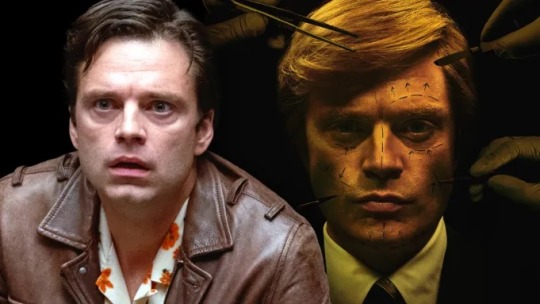
On Monday, Sebastian Stan pulled off a rare feat, scoring Golden Globe nominations for Lead Actor in both Drama and Musical/Comedy categories. Following the announcement, Stan got candid about upcoming projects with Cristian Mungiu, Christian Tafdrup and Justin Kurzel, his experience on the awards circuit with his nominated turn as Donald Trump in The Apprentice, and more.
In discussing his upcoming slate, Stan seemed particularly excited about a project not yet announced with Cristian Mungiu, the Romanian filmmaker behind Palme d’Or winner 4 Months, 3 Weeks and 2 Days, which he expects to shoot next year.
“I was born in Romania. I still speak the language, and I’ve been trying to find a project where I can go back and tap back into that history that I have,” said the actor, “so I’m excited about working with him, and hopefully that’s going to come together.”
A second project on the docket is Let the Evil Go West, a horror thriller from buzzy Danish filmmaker Christian Tafdrup, which reunites him with Pam & Tommy‘s Lily James. The film centers on a railroad worker driven to madness after coming upon a fortune, and his wife, who believes an evil presence has attached itself to their family.
Stan came to the project after seeing Tafdrup’s “unbelievable” horror thriller Speak No Evil, which Universal just remade. “This is a project that’s been going on for a while, and it always gets tricky. It’s about finding the right scheduling and the right time to do it,” said the actor. “But that’s something I’m really excited about.”
While he didn’t get into details, Stan also confirmed that he’s attached to star in Burning Rainbow Farm, a film that The Order‘s Justin Kurzel has in development. Plot details are unconfirmed, but we hear it’s inspired by true events, involving two marijuana advocates who face off against the FBI in a tense five-day standoff in Michigan, culminating in tragedy just days before 9/11.
Stan’s Globe nominations this morning came for Briarcliff’s The Apprentice, which examines Trump’s rise in the 1970s and 1980s New York real estate scene, as well as A24’s A Different Man. Hailing from filmmaker Aaron Schimberg, that title has him playing a man with a disfigurement who undergoes an experimental facial reconstruction surgery, before spiraling into a psychological crisis.
“Stunned and incredibly ecstatic,” Stan shared that the nominations are gratifying given the risks he took with each project and the uphill battles faced with each — The Apprentice, in particular, which struggled to secure financing, and later, distribution, amid the threat of a lawsuit from Trump himself. The project is one Hollywood didn’t seem to know what to do with, both leading up to and in the aftermath of a polarizing, pivotal election.
Sharing that he had “extreme trepidations” about playing Trump — in part, because many in the industry advised him not to — Stan reflected this morning about a disclosure of his that went viral: that while he intended to appear on Variety’s video series Actors on Actors in support of The Apprentice, no actor would step up to talk with him about his project, presumably out of fear of saying the wrong thing.
“For me, the Variety thing was just unfortunately another example of the uphill battle that the movie had been facing since Cannes, that there was some hesitancy and some fear around it…But it wasn’t my intention to point a finger or blame anybody else,” Stan said. “It was just simply saying, ‘Hey, we should be mindful of things that feel fearful.’ Because as artists, we have to hold ourselves as sort of the ambassadors of the truth, in a way…Today, of course, is a big day, in terms of hopefully allowing people to feel like they have permission, to talk about this film, and look at the work and have a conversation about it.”
From Stan’s perspective, we as a society need “all kinds of movies” and “have to try to not ever discriminate against any movie,” even if it’s something as polarizing as The Apprentice. In terms of the current climate of fear among Hollywood stars, when it comes to addressing certain topics, Stan’s feeling is that “there’s always a conversation that we can have about the work and what goes into it.”
A recent speech on Stan’s mind, when it comes to this, is the one given by honoree Richard Curtis at the Governors Awards. “He went up there and said, ‘Look, I am grateful to be standing up here and be recognized this evening. Buts also, I want to say, we love good ideas and we love embracing good ideas, but we also have to follow through on the action of it, even when you get to the last one-yard line, trying to get past it,'” the actor recalls. “Because I know the intentions are always good, and I believe that movies can inspire. I think they can reveal things sometimes that we have a hard time maybe understanding or communicating about in day-to-day life.”
In reflecting on the bold and diverse resume he’s carved out over the last decade-plus, Stan gave credit to his “Marvel family” for being an “incredibly supportive,” consistent presence in his life over the last 15 years, which has allowed him to “go out there and find other projects that allow me to kind of change it up and challenge myself.”
This, he says, is what he wants more than anything. “I’ve always tried to find other actors to learn from and grow from, and I want to be part of something meaningful,” Stan says, “and maybe that’s just me getting older. You want the work to have meaning and to stand for something.”
#DEADLINE#Sebastian Stan#A Different Man#The Apprentice#Upcoming Project#Romanian Movie#Romania#Cristian Mungiu#Let The Evil Go West#Christian Tafdrup#Burning Rainbow Farm#Justin Kurzel#Richard Curtis#New Movies#mrs-stans#Golden Globes
92 notes
·
View notes
Text
Over the recent years, the term guofeng ( literally means “national style”) has seen a rising prevalence in Chinese media to describe popular televisions, films, and musics that are considered to embody an essential “Chinese-ness.” While originated from the Chinese classic The Book of Songs, the concept of guofeng nowadays has already become a part of popular culture. National style is often utilized by the state media to emphasize Chinese history and de-emphasize the queer elements in the drama when discussing boys’ love stories. In her analysis of another BL Xianxia drama, Ye identified Word of Honor, with its soft masculinity, as comprising a larger landscape of reconstructed Chinese masculinity that includes more militant depictions, such as the Wolf Warrior films (dir. Wu Jing, 2015 and 2017), and thus being complicit in “brand homonationalism with Chinese characteristics’.”39) In The Untamed, the national style is manifested through two instruments: the historical items with clear cultural fingerprints and the martial arts chivalry extolled in Xianxia stories.
Set in the ancient indeterminate times of China, the cultural elements like Mo’e (old-style headband), Liusu ( decorative silk tassel), Chinese style gardens and architectures, and frequently mentioned Confucian quotes are prevalent throughout the drama. Some of them are savvily deployed by the producers as a hint of boys’ romance. In most Chinese historical dramas, Mo’e is always used by beautiful men with feminine traits, such as the most widely known characters like Jia Baoyu (Figure 1) and Liu Xianglian (Figure 2) in Hong Loumeng (The Red Chamber, 1984). Gradually, this code is fixated with the meaning of beautiful men (and many times, effeminate men) with fair skin, exquisite facial features, slim yet strong body figures, and graceful manner. In The Untamed, when the male protagonist Lan Wangji appears with Mo’e (Figure 3), his configuration would recall people of the early screen visual presentations and to relate the androgynous beauty with the characters. This cult of male beauty distances young men from the traditional masculinity and delivers a non-conforming gender attitude towards conventional hegemonic models. Moreover, this cultural symbol is deliberately encoded with homosexual implications by the screenwriter. In the drama, people of Lan Clan are asked to wear Mo’e to restrict their behavior ever since they are a child. As a sacred symbol, no one can touch it except for their parents, wife, and children. It represents their identity and bears a sense of belonging. Though acutely aware of its significance, when Wei Wuxian is in danger, Lan Wangji still chooses to take it off and ties it to Wei’s wrist with no hesitation. The emphasizing of “Only wife and son can touch it” in the early part of the same episode denotes that when Lan takes off the Mo’e, he already acknowledges and places Wei Wuxian in the position of a “wife.” His action of taking off the Mo’e not only breaks their clan discipline but also functions as a repudiation of social norms.
However, all this more or less overt depiction of boys’ romance is ignored and even recognized by state media because of its application of national style. Its adaptation of ancient oriental elements was even praised by The People’s Daily for its “wonderful presentation of Chinese characteristics,” and “manifestation of Chinese people’s confidence and pride for our own culture.”40) As a Chinese traditional clothing accessory tied on the forehead and decorated with embroidery or pearl jade, Mo’e originated from the Shang Dynasty (1600 to 1046 B.C.)41) and was used in the military for managing and distinguishing troops, but in its later evolution, both men and women, especially in the rich family wore it as a decoration. When The Untamed gets an unprecedent hit in the overseas market, the Chinese government chooses to exploit its cultural values to exert its “cultural export” program thus turning blind eyes to its boys’ love content.
Coalition between Drama Producer and Audience: Encoding and Decoding of Boys’ Love Stories in Chinese Xianxia Drama The Untamed (陈情令) 건지인문학 2024, vol., no.40, pp. 135-174 (40 pages) DOI : 10.22830/humins.2024..40.135 by CHEN YUE
40 notes
·
View notes
Text
It's really sad that we didn't get any end credit blurbs for the bosses in Antonblast. They wrote some for Ring-a-Ding, so clearly they were planning to, and maybe they'll add them?
Eh, in the meantime,
Brawlbuster:
"Brawlbuster left the wrestling ring humiliated and broken, and chose to pivot his career towards acting."
"His biggest roles were all in superhero movies he personally wrote and promoted himself."
"The superhero film industry is filling for bankruptcy."
Jewel Ghoul:
"Jewel Ghoul died in his battle against Anton, becoming the first known case of a dead ghost in history."
"He's been left stuck in purgatory as a result, as absolutely no one in Heck wants to bother with the paperwork."
"He is currently crowdfunding for facial reconstructive surgery."
Tallbuster:
"Tallbuster got his life together and decided to attend a community college for moles."
"Graduating with honors and as the best of his class, he's now putting his degree to good use at Boiling Bob's Boiling Tubs and Stuff hot tub shop."
"He's the waving tube man in front of the store."
Freako Dragon:
"Freako Dragon moved to Brazil and renamed himself to Normo Dragon."
"He's making a living selling newtons cradles made out of his own body, and is now the richest dragon in the world."
"His parents still hate him."
Smallbuster:
"Smallbuster sold the patents to all of her inventions, amassing a fortune and retiring to a life of luxury..."
"For all of twenty minutes before the costs to repair Heck drained it to nothing."
"She is currently plotting world domination in her mom's basement."
Maulbuster:
"With the throne empty, Maulbuster seized the opportunity to become the undisputed ruler of Heck."
"She's rebranded the underworld into her own personal theater troupe to take the world by storm with."
"Her latest success story: William Shakespeare's "Dude, Where's my Car?""
21 notes
·
View notes
Note
I've read your post about Sidney Beldam (what a man!) and it fascinated me enough to buy (quite impulsively) The Facemaker. Long story short, thanks to you and Lindsey Fitzharris I'm in my history-of-medicine-nerd-era and in gayly-interested-in-WWI-period; and The Facemaker might be one of my favourite books I've read this year. The stories of soldiers! The photographs! The work of Gillies! And reading that he performed the first known phalloplasty on a trans man was a very pleasant surprise, you know.
As an ask without an ask wouldn't be technically an ask, here I ask: Do you have any academic paper or book "with plot" recommendations? Either something similar to The Facemaker or just something about or set during the era?
Ahh I’m glad it’s been so inspiring! Ah hell yes Gillies was on that king shit doing the phalloplasty, really set the bar for transgender medical care of the 20th century!
I’ve got (a lot) more info than you’ve wanted if you don’t mind (I really can’t help myself), WWI and thereabouts is a great place to look if you’re getting into medicine history cos that’s when a lot of rapid change happened due to the war as well as the Edwardians’ newfound fight against germs and with the influenza pandemic towards the end of the Great War. My area at the moment for 1900-1920s medicine is plastic and reconstructive surgery, amputations, shellshock and PTSD, post-war rehabilitation, and the general RAMC. So I’ve got some recs for medicine and treatment for the body and mind around the war!
For academic books with a bit more narrative/soldier accounts as you asked:
Wounded by Emily Mayhew. I’ll admit I’ve not picked it up just yet but I do own it and it goes a lot off soldier’s stories
Forgotten Lunatics of the Great War by Peter Barham. Fantastic read about the stigma of “lunacy” and the psychological hardships men faced returning home including fighting for pensions due to lost limbs and shell shock.
Breakdown: the crisis of shellshock on the Somme, 1916 by Taylor Downing. While I don’t agree with this author’s personal views on the war, it does give soldier accounts looking at how the military alone viewed and responded to shell shock which can be helpful to understand in contrast to the civilian post-war response, especially since PTSD and shell shock are two different conditions and the former wasn’t widely understood almost until the 21st century.
Medicine in the First World War Europe: soldiers, medics, pacifists by Fiona Reid. Cannot remember the exact nature of this book cos I can’t remember if I own it but if I remember right it does have more of a personal accounts type telling.
Testament of Youth by Vera Brittain. Not 100% a medical read but a famous memoir written by feminist and pacifist Vera Brittain about her time before the war and during such as a VAD nurse
Two more clinical book reccs if you’re into the how and why of wounds and such:
Faces from the Front by Andrew Bamji. Very good look into the treatment of facial injuries with plastic surgery, it is at times a bit graphic as there are plenty of photos
War Surgery 1914-18 edited by Thomas Scotland and Steven Heys. Great look into injuries and their pathology, approachable read with clearly defined figures and not just massive walls of text along with an extensive bibliography. I recommend this as well for anyone writing WWI fiction because this tells you how wounds ACTUALLY happened and presented themselves
Purely fictional but with medical themes in nature (off the top of my head):
The Regeneration Trilogy by Pat Barker. Quite well known, but depicts the psychological effects of WWI on various characters. If you want queer themes, you’ll like this.
Johnny Got His Gun by Dalton Trumbo. American anti-war novel about a soldier who horrifically looses his arms, legs, face, hearing, and sight during the war and is confined to a secluded hospital bed at the mercy of doctors and nurses who don’t know what to do for him.
A Month in the Country by J. L. Carr. More queer themes! Tells the story about two WWI vets doing archeological work at a church in the English countryside and their lasting battle with shell shock.
I’ve also got a list of a handful of academic type sources slowly collected over the past months for various medical WWI things. These are only the ones I remembered to save, but I know there were certainly several more:
Website on the detailed RAMC evacuation
Pay to access source on prosthetic limbs in Britain via JSTOR
bibliography for First World War medicine as a kind of jumping off point for more academic papers and medical books
Academic paper reflecting on Britain’s response and treatment of shellshock
Good short article on the care of veterans for work and housing post-war
Continuously updating catalogue containing medical records that detail quite interesting stories like a bombardier receiving hypnotherapy to cure shell shock, hyperlink at the bottom to search database
REALLY good site on the RAMC duties at casualty clearing, advanced dressing, and regimental aid
WIP article on Gillies, Sidcup, and patients written by person whose friend was the granddaughter of Sidney Beldam
Academic article on facially disfigured men reclaiming agency and visibility
Short article on soldiers and disability struggles after the war
Masculinity, Stigma and Facial and Psychological Injuries of the First World War thesis paper
Erskine Hospital records that show the hospital, rehabilitation, and patients as well as limb making. Full collection is held at the University of Glasgow
Relationships between medical care and masculinity
Also off the top of my head, if you’re ever in Edinburgh for whatever reason, you might really enjoy the Surgeon’s Hall Museums as there are thousands of artefacts on display such as antique medical equipment, Victorian dentistry items, 17th century skeletons, and 20th century prosthetics. Literally it is floor to ceiling in the main gallery with jarred organs, body parts, bones, and even most remarkably the preserved upper half of the face, moustache and all, of a WWI soldier which is probably one of—if not the—most fascinating and haunting thing I’ve ever seen at a museum imo. It can be a bit of a shock to the system if you’ve never been to that sort of thing before so take care when going. I’ve been about three times and there’s still a couple items that make me go a bit light headed to look at!
Anyway I know it’s a lot but I hope something in there could be more of help to you! Cheers x
66 notes
·
View notes
Text
Afterimage: a Fiddlestan fanfiction
a sight lingering in view after seeing what one knew
A month after opening the Murder Hut, Stan is no closer to finding any clues as to how to get Ford back—until one literally jumps him.
Rating: E (not until much later chapters, nor central to plot) No archive warnings apply
Chapter 1
After reading Ford’s journal front-to-back for weeks now, it wasn’t really as if Stan ought to have been surprised when he saw the… thing? Creature? “Anomaly”? Weird little guy? Whatever it was.
And, after the colorful history of his entire adult life, he shouldn’t have been surprised when he got jumped. His body wasn’t, at least—long-trained reflexes had his assailants on the ground before they could drag Stan off to God-knows-wherever anyone would want to drag Stan off to in Buttfuck Nowhere, Oregon.
But seriously, getting jumped here? He hadn’t been expecting it. Nobody had caught up to him here yet. He knew that the faked death might not convince every person who wanted a pound of his flesh (and not in the fun way), but had still thought that between it and the literally-not-on-any-maps seclusion of this sleepy little town, he’d reached a rare place of relative safety.
Aside from, y’know, giant zombie bats or whatever, tree giants that ate cars. Shit like that.
Of course Ford would have been living here.
But, apparently, Stan now had to add “cloaked weirdos sneaking up behind you” to the list of exceptions to that safety. Seriously, what the fuck? The dude sprawling underneath him looked like some cultist out of a cheap comic book from his youth.
Stan went to lift their hoods—might as well have a better idea of what he was dealing with, especially if he saw these people around town or something later.
The first person was nondescript enough, nobody Stan was familiar with, but the second person—
Stan tensed.
He’d been all through Ford’s basement laboratory; had utterly ransacked it by now, searching desperately for some small clues as to the portal’s origins, reconstruction, and use.
And now, one was knocked flat on his ass unconscious beneath Stan.
The the very 70s facial hair was gone, replaced by a haggard sense of age beyond what a decade alone should have dealt to his looks—but the rest of the face was the same.
“Try to forget,” the ripped photo in the drawer had said.
Who forget who, Stan had wondered at the time; it hadn’t been in Ford’s handwriting, though.
Stan needed answers, and he needed them yesterday. And here before him was the first hope in hell of getting any that he’d had since the journal he'd already read cover-to-cover at least 20 times.
But how to get them from this guy?
Fiddleford H…—H…? …fuck—Fiddleford McGucket woke with a start, in about his second-least-favorite way to wake up. He started to shake as he thrashed against his bindings—how did the damned thing get at him—before he realized that he wasn’t in the bunker, and that these bindings weren't as extensive as before—and that he couldn’t quite remember what it was that he was even scared of in the first place, nor the bunker.
But he was still tied up, in the forest, at night, so he started thrashing harder.
“Don’t wear yourself out,” came an unfamiliar, gravelly voice from the shadows. Through them, Fiddleford could make out the silhouette of the man he’d been unsuccessful at restraining—at helping, he immediately corrected himself.
Clearly, the experience of not only seeing the eerie creature, but also of being unable to have the Society’s help in soothing his mind from the frightful experience had set this man on edge, and he’d lashed out in confused retaliation. Nevermind—he would feel better as soon as Fiddleford could, well, escort him back to the Society’s base, and they could calm his agitated nerves.
Getting an impression of the man’s bulk and the way he moved with the well-honed grace of a predator-prey, Fiddleford wasn’t sure how he was going to manage that on his own. Upon reflection, maybe it had been a bit foolish thinking that just he and a single colleague alone could usher this man back to their base of operations.
Fiddleford squirmed and jerked around, regardless of what the stranger said, as he tried to come up with a plan. He’d just have to use some manner of persuasion—somehow—but the silhouetted figure sighed, cutting off Fiddleford’s thoughts.
“Listen, those bindings aren’t comin’ undone ’til I cut you loose, you’ll just give yourself rope burn.”
The stranger shifted closer, and a beam of bright moonlight struck his face.
Fiddleford gasped, then gagged, then choked a little.
“Ah fuck—” he heard the unfamiliar voice mutter, and a meaty fist was pounded to Fiddleford’s back as he coughed.
“Y—you,” Fiddleford gasped. “Th—wh—who—”
His face worked furiously as his mind scrambled through half-shredded fragments of memory.
Then it clicked, hitting him in the gut like a freight train as broken recollections pieced themselves back together again.
“Stanford?!” he started, staring up at his former friend, wild-eyed—then, looking him over, he registered the slight incongruities of the heavy man’s features, and blanched.
Five fingers.
The voice hadn’t been right, either.
Memories of the shapeshifter came crashing back to him, and his heart raced like a hunted rabbit as he searched for a way out. He found none.
Fiddleford flopped frantically like a hooked fish, senseless with terror.
He would have fallen flat on his face and probably broken something had it not been for strong, broad hands catching his pathetically panicking form.
“Woah, uh, hey there—” an awkward rumble came from Not-Stanford, as thick arms loosely encircled Fiddleford.
There was a hesitant gentleness now to this creature's voice and gestures that Fiddleford couldn't reconcile. The shapeshifter was masterful at visual deception, but he couldn’t imagine it capable of being startled into tenderness, nor imitating such a reaction so well.
And not so masterful this time with the visual deception either—so then, what…?
Fiddleford shook violently in Stanford-Not-Stanford’s hovering grasp as he searched the doppelgänger’s face. The trickles of memories knitting themselves back together had become floods, and he remembered Actual-Stanford rambling enthusiastically about the traits of certain shapeshifting anomalies: those who could become lookalikes, but usually missed some key features.
Like the cleft chin, Fiddleford remembered.
No glasses either, and the hair was much too long for the time that had passed.
In his wild panic, he even examined the hands for signs of stumps where sixth digits used to be, but nothing.
There was only one explanation that Fiddleford was drawing, and it was not a good one.
Why then the genuine concern on this shapeshifter’s face?
Cautiously, the creature lowered Fiddleford’s back to rest against a tree, propping him into a more comfortable sitting position.
“Look, I’m sorry about the restraints—sort of; to be fair, you did jump me.”
“You’re not Stanford,” he spat at it.
“I’m not Stanford,” the creature agreed.
Read the full fic on ao3
#my writing#fiddlestan#mullet stan#trans fiddleford#gravity falls#gravity falls fanfiction#trans fiddleford mcgucket#fiddlestan fanfic#gravity falls fanfic#fiddlestan fanfiction#fiddleford mcgucket#stanley pines#stan pines#fiddleford x stanley#fiddleford#young fiddleford#young fiddleford mcgucket#young stan pines#fiddstan#gravity falls fiddleford#fiddleford hadron mcgucket#society of the blind eye#fiddleford h mcgucket#fiddleford x stan#fiddleford h. mcgucket#gf fanfic#gf fiddleford#fiddlestan fic#fiddleford mcgucket fanfic#mcgucket monday
24 notes
·
View notes
Text
2 notes
·
View notes